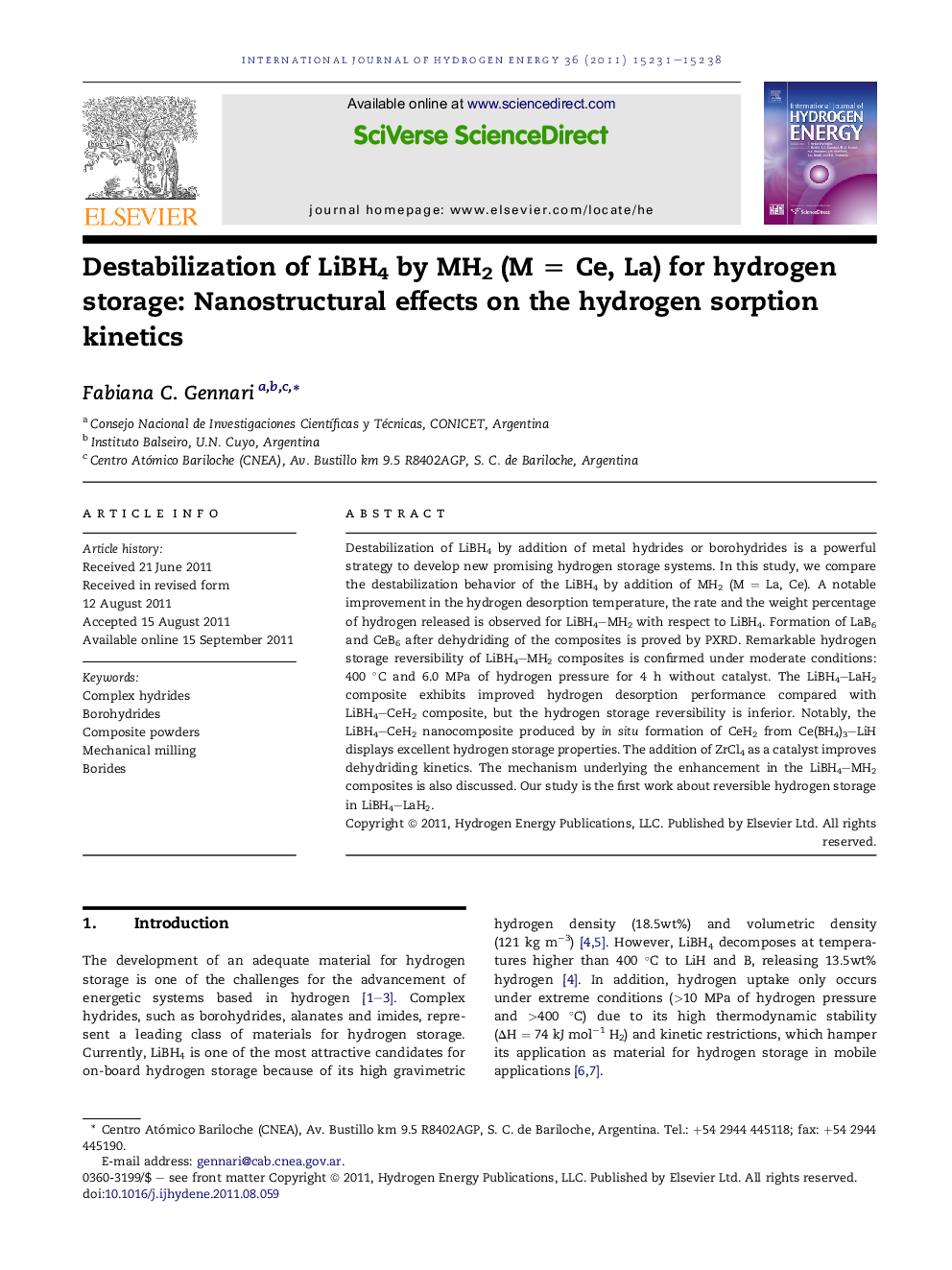| Article ID | Journal | Published Year | Pages | File Type |
|---|---|---|---|---|
| 1271816 | International Journal of Hydrogen Energy | 2011 | 8 Pages |
Destabilization of LiBH4 by addition of metal hydrides or borohydrides is a powerful strategy to develop new promising hydrogen storage systems. In this study, we compare the destabilization behavior of the LiBH4 by addition of MH2 (M = La, Ce). A notable improvement in the hydrogen desorption temperature, the rate and the weight percentage of hydrogen released is observed for LiBH4–MH2 with respect to LiBH4. Formation of LaB6 and CeB6 after dehydriding of the composites is proved by PXRD. Remarkable hydrogen storage reversibility of LiBH4–MH2 composites is confirmed under moderate conditions: 400 °C and 6.0 MPa of hydrogen pressure for 4 h without catalyst. The LiBH4–LaH2 composite exhibits improved hydrogen desorption performance compared with LiBH4–CeH2 composite, but the hydrogen storage reversibility is inferior. Notably, the LiBH4–CeH2 nanocomposite produced by in situ formation of CeH2 from Ce(BH4)3–LiH displays excellent hydrogen storage properties. The addition of ZrCl4 as a catalyst improves dehydriding kinetics. The mechanism underlying the enhancement in the LiBH4–MH2 composites is also discussed. Our study is the first work about reversible hydrogen storage in LiBH4–LaH2.
► This study is the first work about reversible hydrogen storage in LiBH4–LaH2 composite. ► The destabilization behavior of the LiBH4 by addition of MH2 (M = La, Ce) is investigated. ► Notable hydrogen storage reversibility of LiBH4–MH2 composites is confirmed. ► The LiBH4–LaH2 composite displays superior hydrogen desorption rate. ► The LiBH4–CeH2 system improves its hydrogen storage properties by nanostructuring and catalyst addition.
